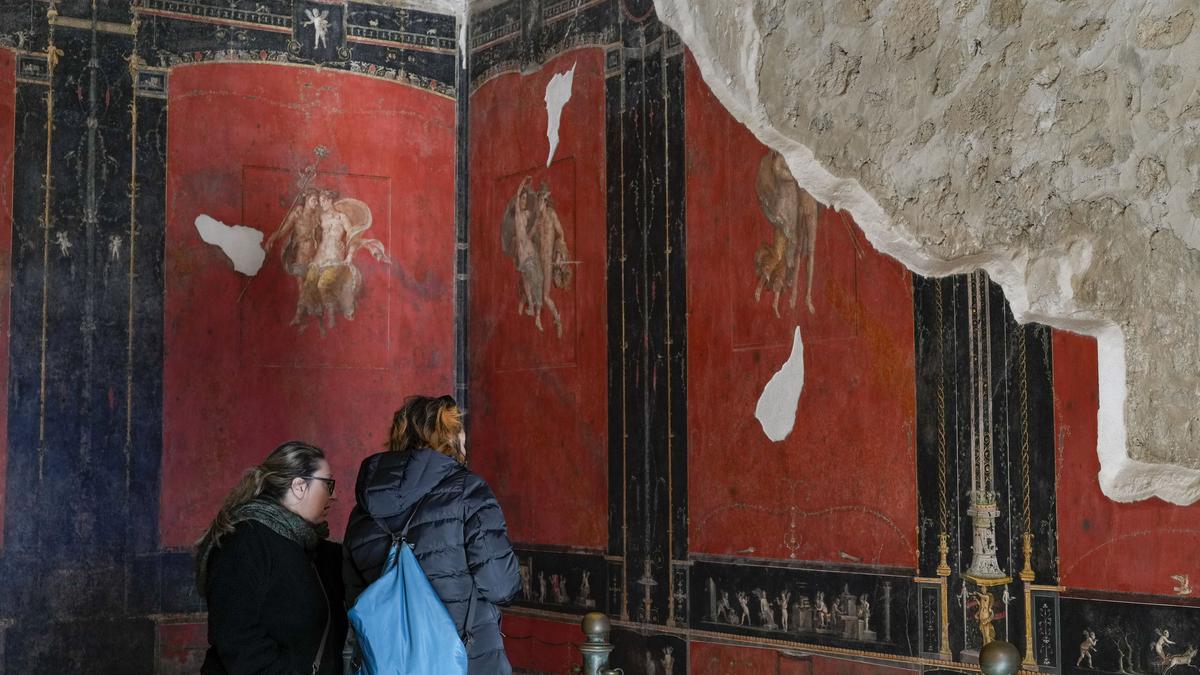
Pompeii's ancient art of textile dyeing revived to show another side of life before eruption
The Hindu
Revive ancient textile dyeing techniques to recreate Pompeiian colors & fund restoration efforts at the once-sprawling city.
A new project inside the Pompeii archaeological site is reviving ancient textile dyeing techniques to show another side of daily life before the city was destroyed by a volcano in A.D. 79
The inspiration comes from frescoes unearthed inside the archaeological site that show winged cupids dyeing cloth, gathering grapes for wine and making perfumes.
“It is very close to the actual reality,” the archaeological site’s director, Gabriel Zuchtriegel, said of the images.
For the project, Mr. Zuchtriegel tapped a master dyer based in Umbria, Claudio Cutuli, who uses dyes that he makes from plants in his own clothing line.
Mr. Cutuli uses the root of “rubia tinctorum,” or rose madder, for the famous Pompeiian red. He uses walnut husks for brown, elderberries for black and gray and cardamom for the amber, yellow and shades of green.
With the Pompeiian color palette, Mr. Cutuli is dyeing scarves with motifs taken from the House of Vetti frescoes, which include the cupids. The rich home, like the rest of Pompeii, was buried under ash.
Half of the profits from the scarves' sale will help fund further restoration efforts at the once-sprawling city, where gardeners recently recreated a nursery that includes plants that were used for dyeing before Pompeii's destruction.

 Run 3 Space | Play Space Running Game
Run 3 Space | Play Space Running Game Traffic Jam 3D | Online Racing Game
Traffic Jam 3D | Online Racing Game Duck Hunt | Play Old Classic Game
Duck Hunt | Play Old Classic Game











